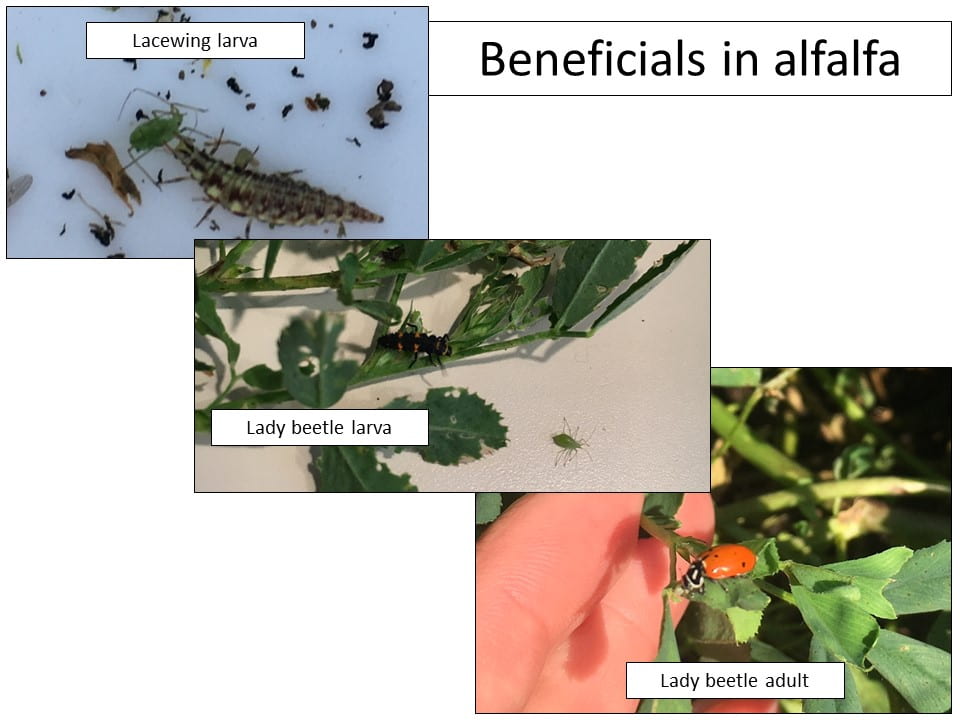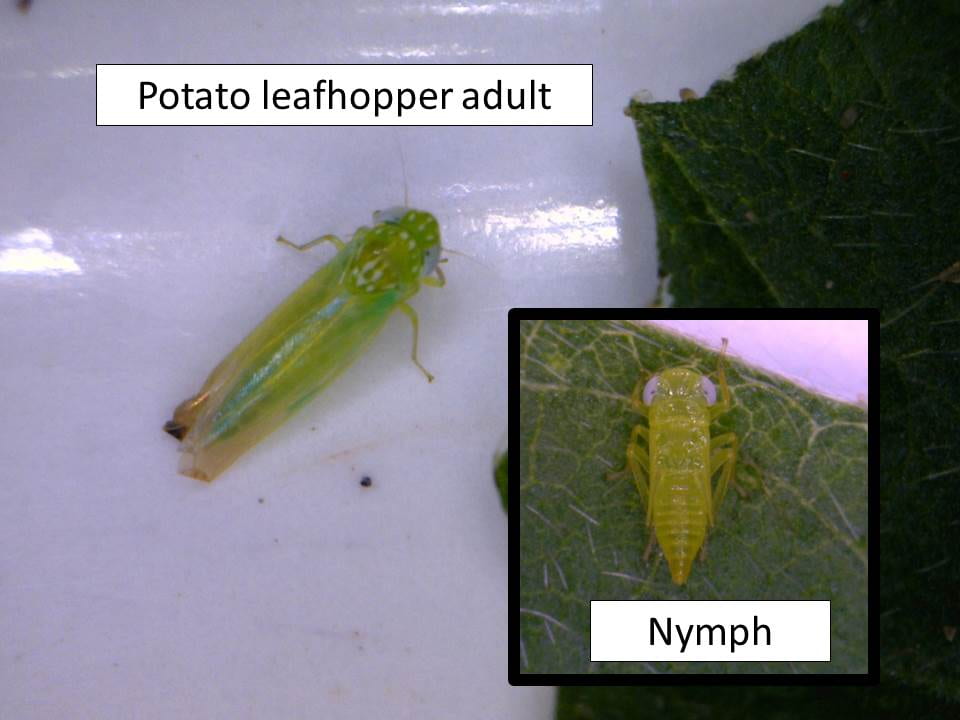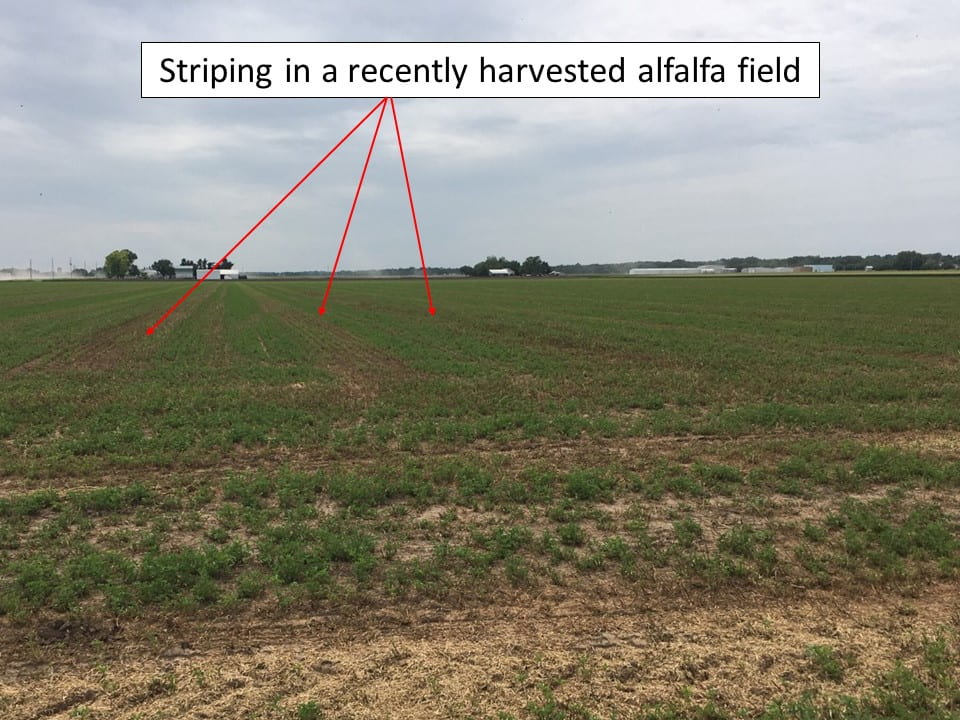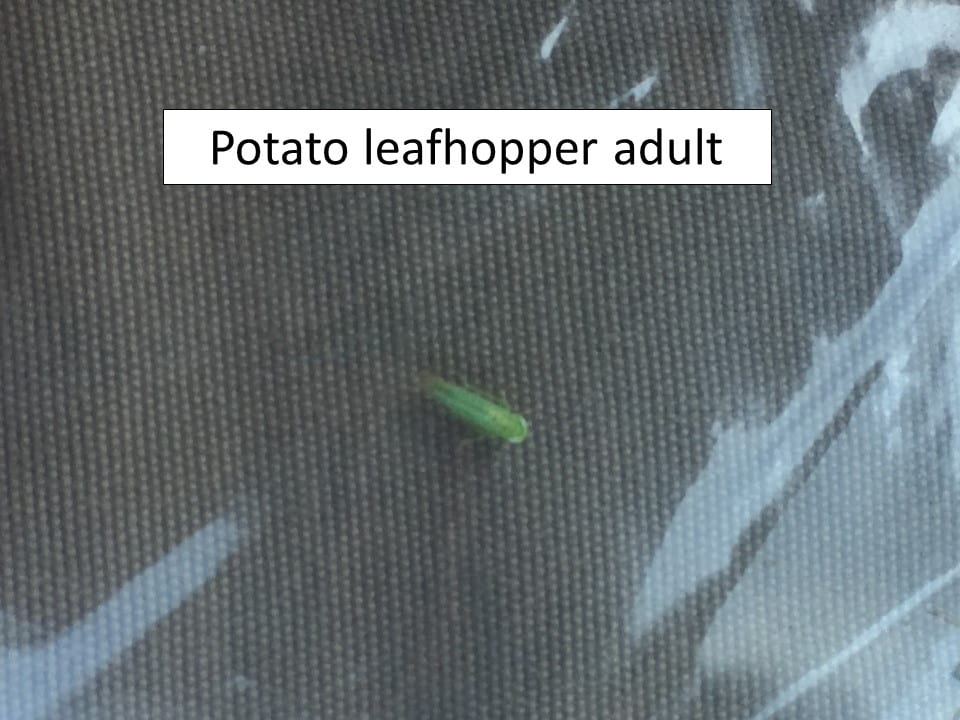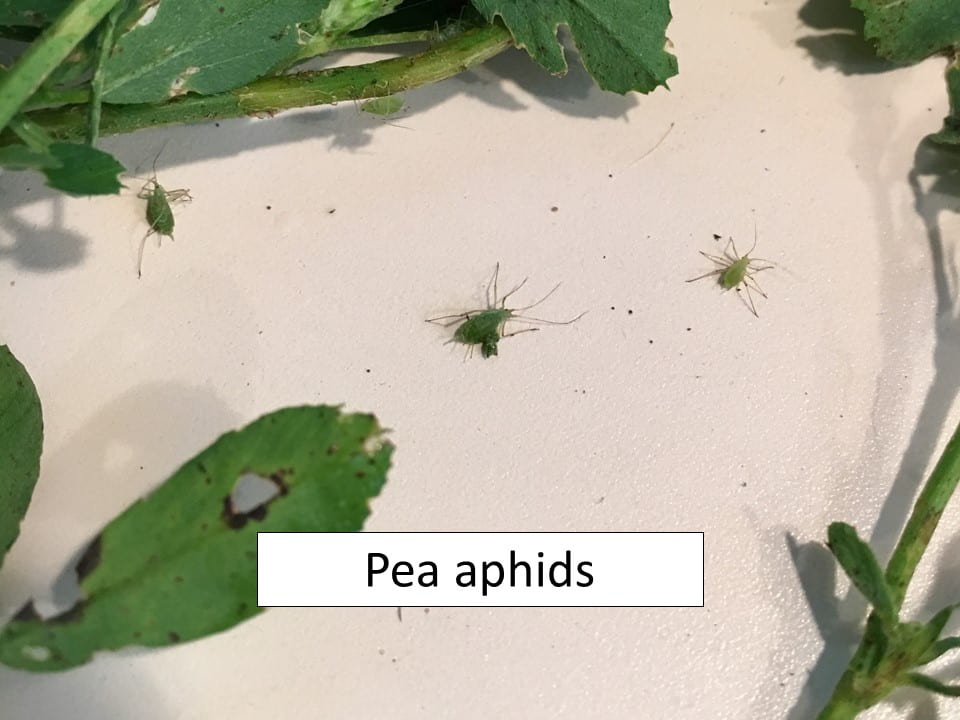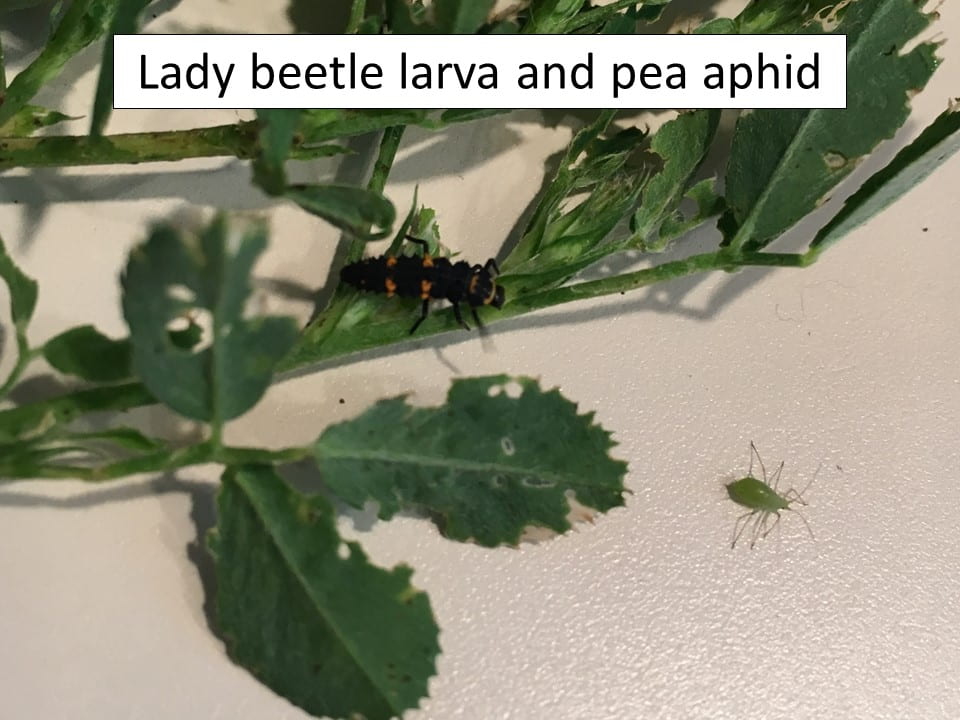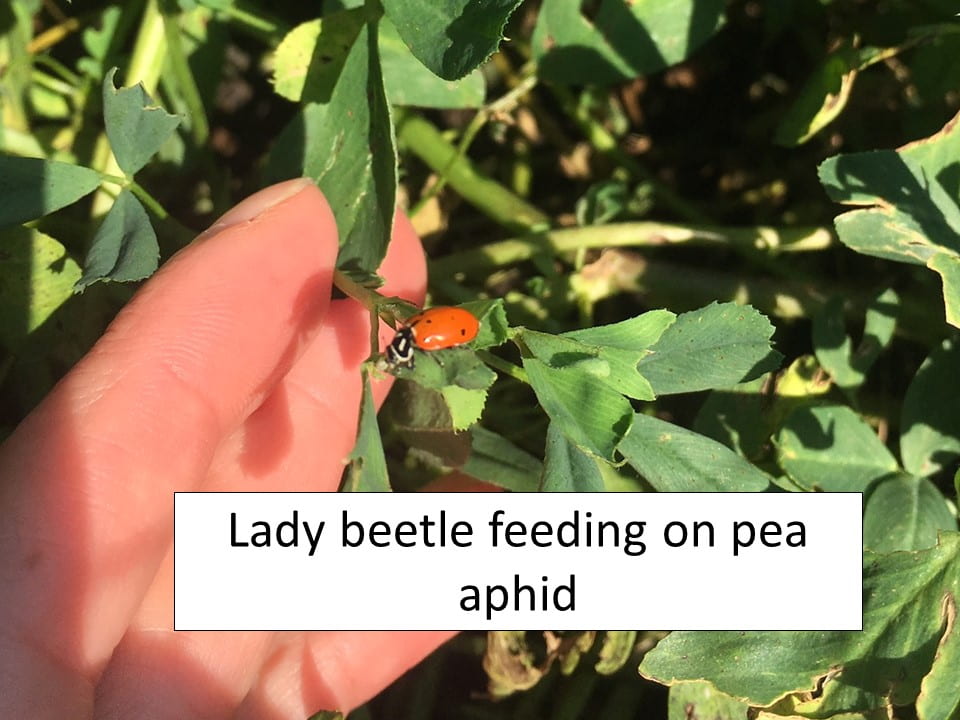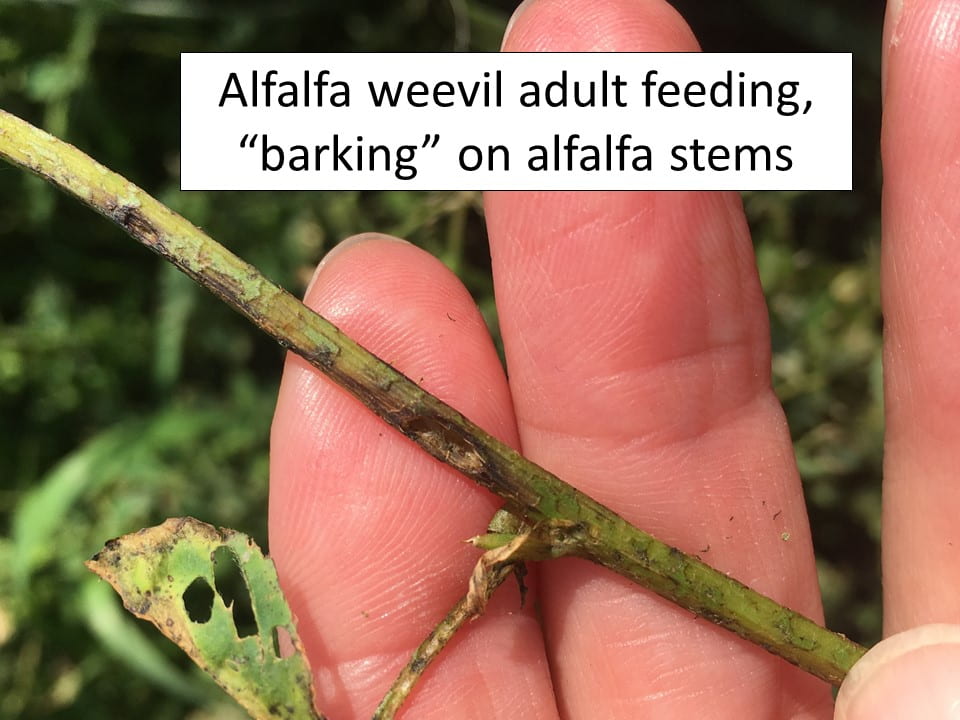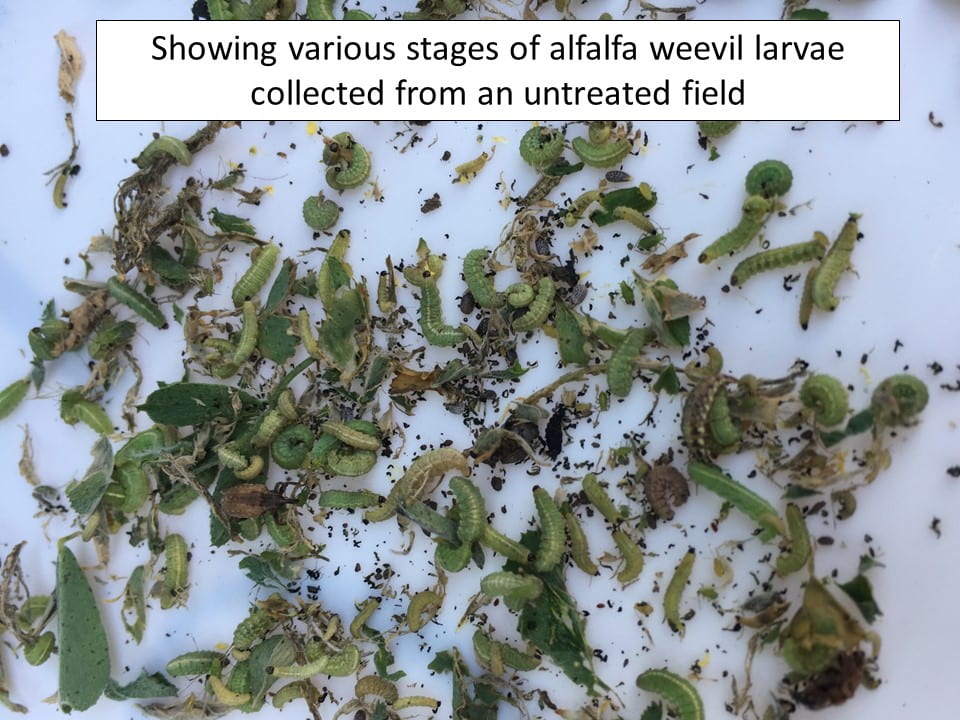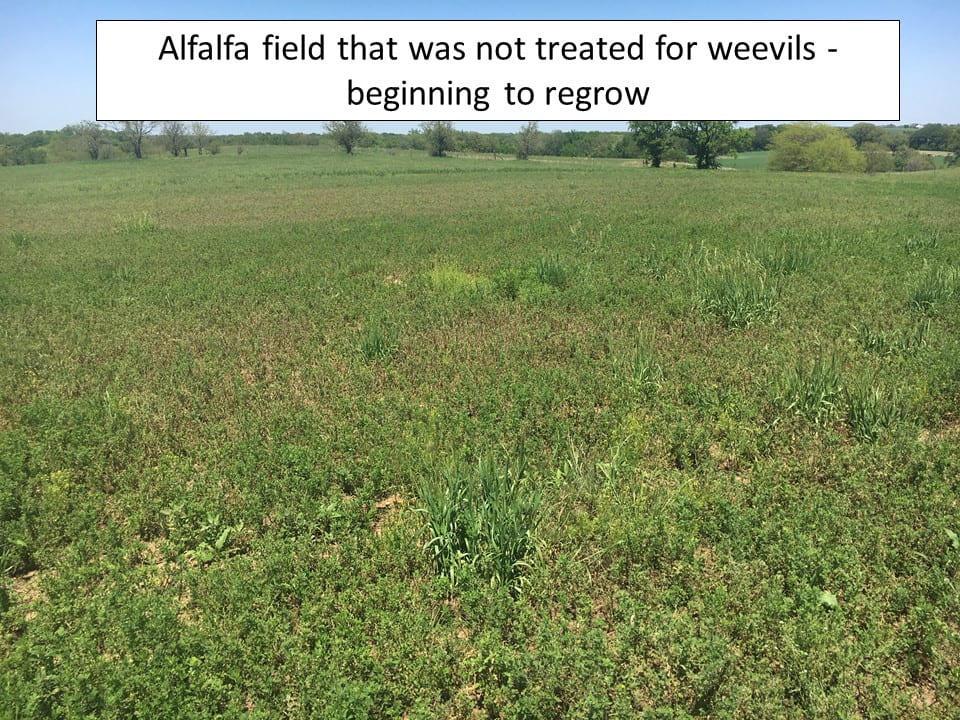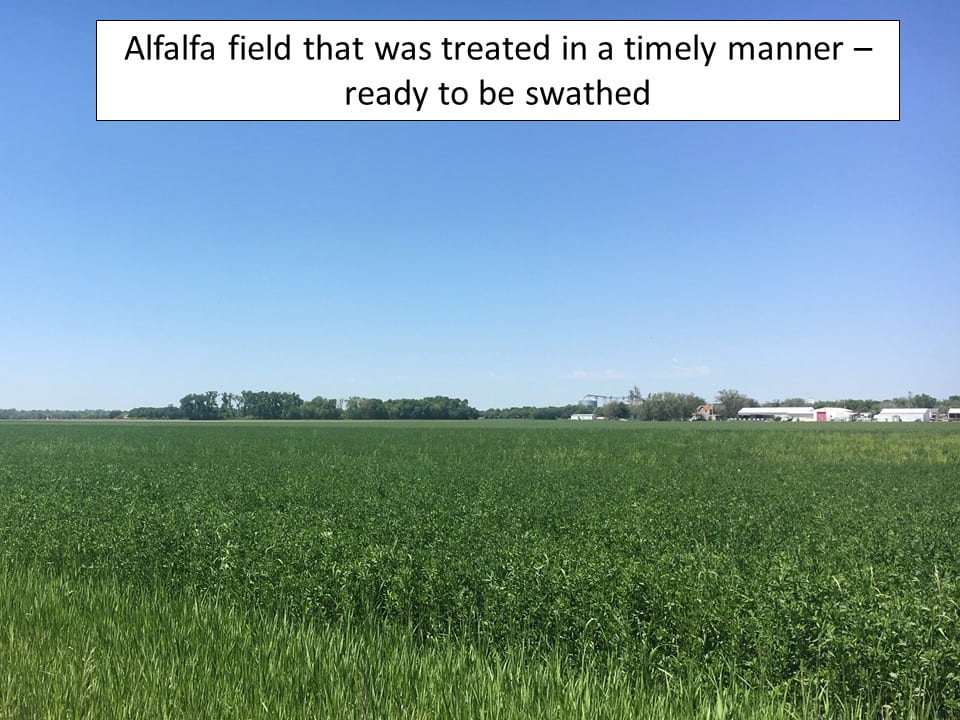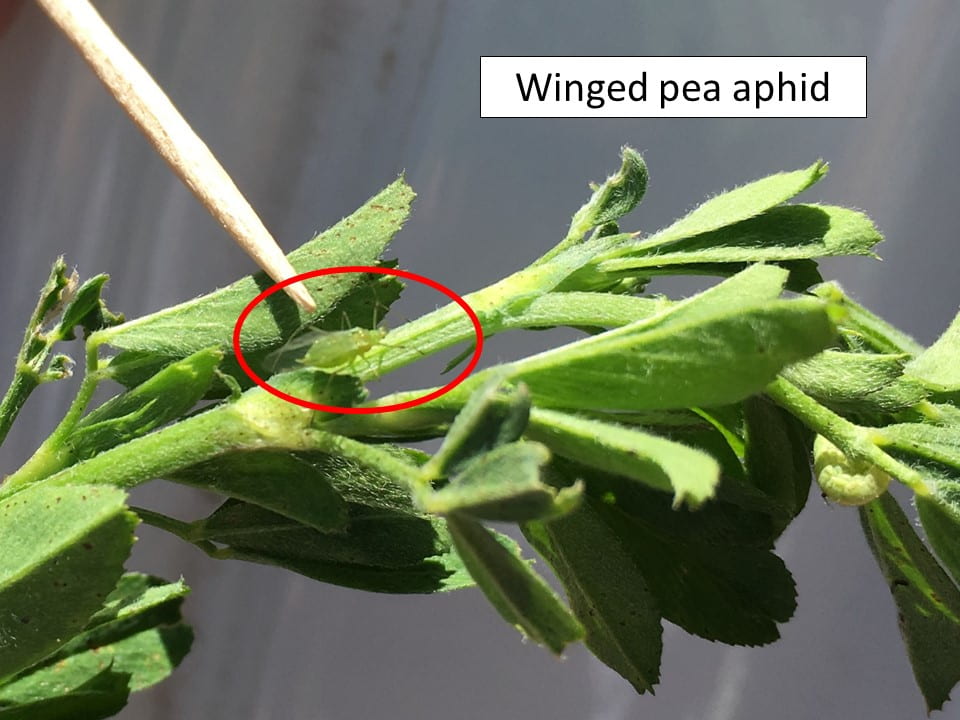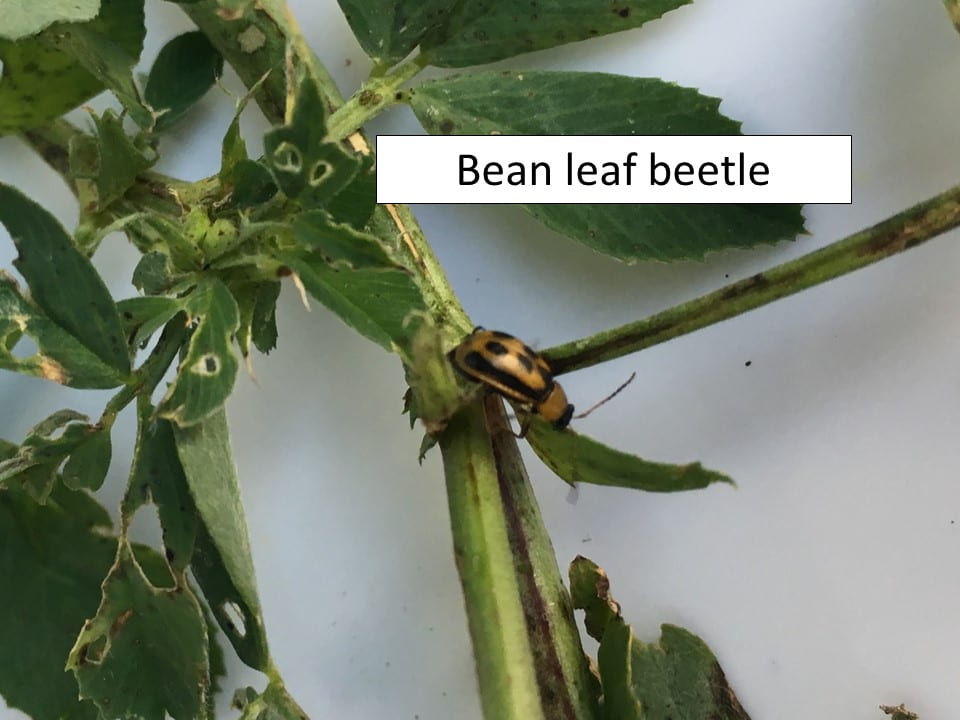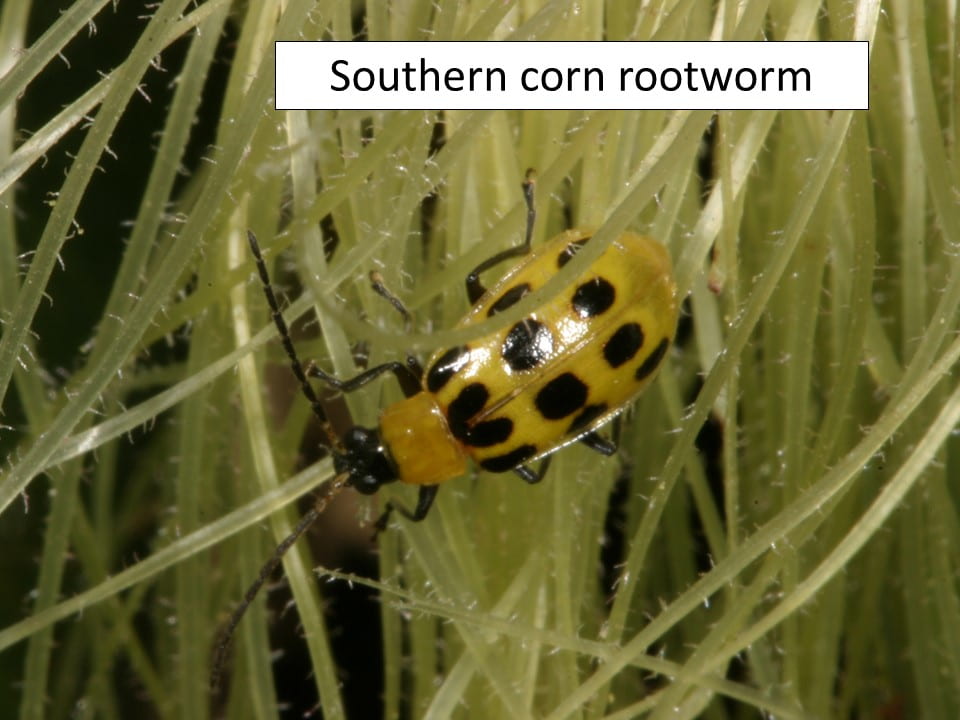— by Dr. Jeff Whitworth and Dr. Holly Davis
Bean leaf beetle adults that are out and about now have successfully overwintered, probably fed a little in an alfalfa field, and are now eagerly awaiting soybean germination. These adults are amazing at finding the first, small soybean plants where they begin feeding, causing the characteristic round and/or oblong holes in the small leaves. These beetles will feed for just a little while and then begin depositing eggs in the soil around the stems of these plants. These young plants are usually very resilient at overcoming this early season leaf feeding, until it reaches 50% defoliation or more. For more information on bean leaf beetle biology and management, please see Bean Leaf Beetle: https://www.bookstore.ksre.ksu.edu/pubs/MF2824.pdf
For more information relative to all soybean pests, please see the KSU Soybean Insect Management Guide: https://www.bookstore.ksre.ksu.edu/pubs/MF743.pdf

